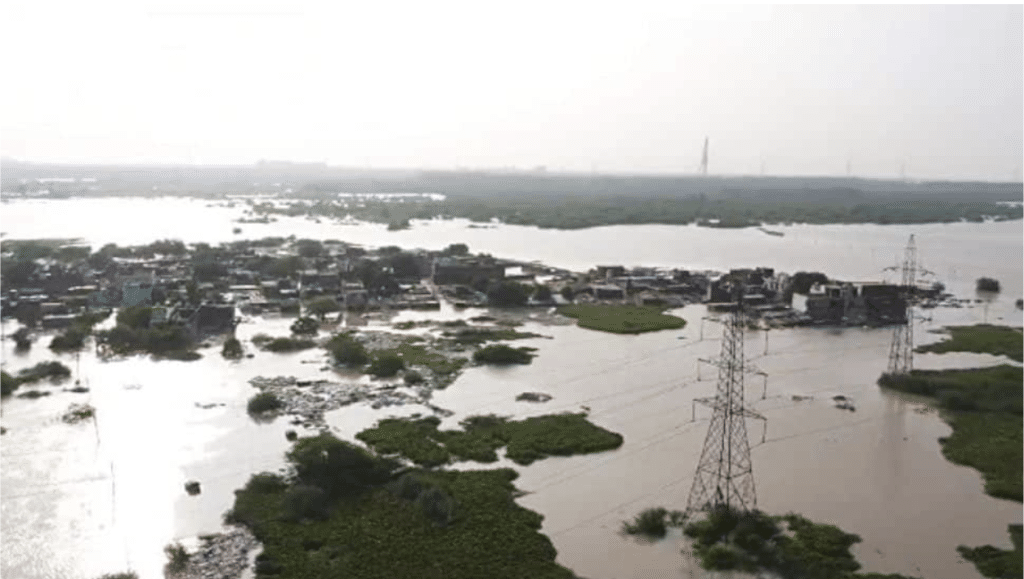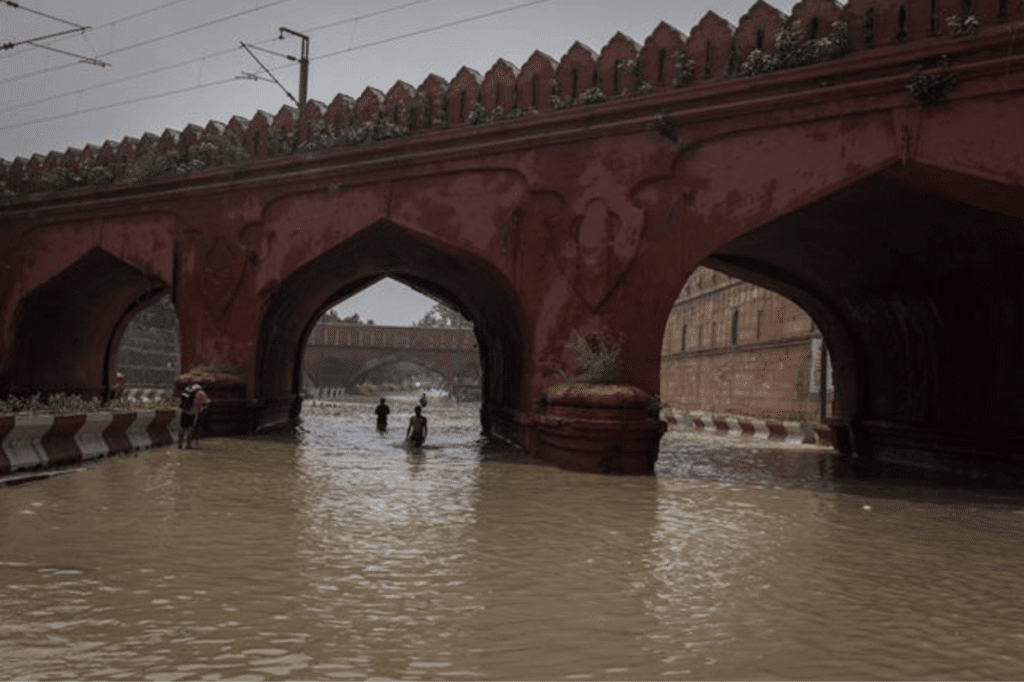
photo credit: The Cable News Network (CNN)
Northern India is currently grappling with a devastating natural disaster as heavy rains continue to lash the region, triggering flash floods and landslides. As New Delhi experiences its wettest July day in over four decades, the entire nation is facing the brunt of the monsoon season’s fury. The recent torrential rains have resulted in the deaths of at least 22 people, primarily in the state of Himachal Pradesh, leaving a trail of destruction and loss behind. The situation highlights the urgent need for climate resilience measures and the recognition of the profound loss and damage caused by such extreme weather events.
The floods have wreaked havoc on Himachal Pradesh, with many lives tragically lost and numerous homes and properties devastated by the deluge. As rescue efforts continue, the toll on human life and livelihoods remains distressingly high. The overflowing Beas River has added to the perilous conditions, submerging areas and hampering rescue operations. The scale of destruction demands immediate action and humanitarian assistance for the affected communities.
Landslides have compounded the challenges, making transportation and access to remote areas nearly impossible. As families struggle to find safety, officials are urging residents to stay indoors and avoid travel for their own safety. Schools and colleges have been closed in the affected regions, leaving educational pursuits interrupted and exacerbating the hardships faced by the younger generation.
Apart from the loss of lives, these floods also bear a significant economic impact. Infrastructural damage, crop loss, and disruption of essential services can lead to long-term consequences for the region’s economy. The floods in Himachal Pradesh, Uttarakhand, Punjab, and Haryana have caused widespread damage to roads, bridges, and communication networks, further isolating communities in the affected regions.
The unprecedented intensity of the monsoon rains and the extreme weather events India has experienced this year point to the undeniable influence of climate change. The climate crisis has amplified the frequency and severity of such natural disasters, exposing vulnerable communities to heightened risks. This ecological imbalance poses a substantial threat to human lives, particularly in densely populated regions like India, where millions are susceptible to the devastating effects of climate-induced disasters.
The floods have wreaked havoc on Himachal Pradesh, but the repercussions are felt far beyond the affected state. In New Delhi, the capital city, the relentless rains have overwhelmed the city's infrastructure, leading to waterlogging and severe disruptions in daily life. Low-lying areas of Delhi have turned into waterlogged zones, making movement hazardous and hindering essential services. Residents in these areas are struggling to protect their homes and possessions from the rising waters. One such neighborhood severely impacted by the floods is Old Delhi. Old Delhi is known for its bustling markets and vibrant community. However, the floodwaters have transformed this lively locality into an underwater maze. Residents have had to evacuate their homes, leaving behind everything they hold dear. Local businesses, which were already reeling from the economic impact, are now facing additional losses due to property damage and disruptions in supply chains.

photo credit: Leena Joshi
The extreme flood situation in India illustrates the concept of “loss and damage” within the realm of climate change discourse. Loss and damage refer to the irreversible, non-recoverable impacts caused by climate change that extend beyond adaptation measures. These include the loss of lives, livelihoods, cultural heritage, and biodiversity, as well as the costs associated with recovery and reconstruction.
Addressing the issue of loss and damage requires international cooperation and financial support from developed nations, as many developing countries, like India, lack the resources to cope with the aftermath of extreme weather events. The United Nations Framework Convention on Climate Change (UNFCCC) acknowledges loss and damage as a distinct area of action, but greater efforts are needed to establish mechanisms and funding to assist vulnerable nations in adapting and recovering from climate-induced disasters.
The recent deadly floods in northern India serve as a stark reminder of the urgent need to address the impacts of climate change and implement effective climate resilience measures. As the monsoon season continues, the situation calls for immediate humanitarian aid and support for the affected communities. Additionally, global cooperation is essential to address the concept of loss and damage, recognizing the irreversible consequences faced by vulnerable nations like India. Only through collective efforts and proactive measures can we hope to mitigate the devastating impacts of climate change and protect lives, livelihoods, and the natural heritage of our planet.
To prevent future flooding and mitigate the effects of climate change, a combination of policy changes and infrastructure improvements is essential. Firstly, governments should prioritize investing in climate-resilient infrastructure, which involves building and retrofitting structures to withstand extreme weather events. Constructing flood-resistant buildings, improving drainage systems, and strengthening river embankments can minimize flood damage and protect communities. Secondly, sustainable urban planning is crucial for adapting to climate change. Urban areas must adopt practices that prioritize green spaces and permeable surfaces, allowing for better absorption of excess rainwater and enhancing overall climate resilience. Integrating more trees and green infrastructure can play a significant role in reducing the risk of waterlogging and its adverse effects. Thirdly, implementing effective early warning systems can save lives during disasters. Timely alerts can help residents evacuate to safer areas before floodwaters inundate their neighborhoods, reducing casualties. Additionally, raising awareness about climate change and its impacts is crucial. Climate education can empower individuals and communities to adopt sustainable practices and put pressure on policymakers to prioritize climate action. Lastly, international cooperation and funding are imperative. Developed nations must extend financial support to vulnerable countries like India to enhance their climate resilience and assist in post-disaster recovery efforts. By collectively implementing these measures, we can work towards a more sustainable and resilient future for all.